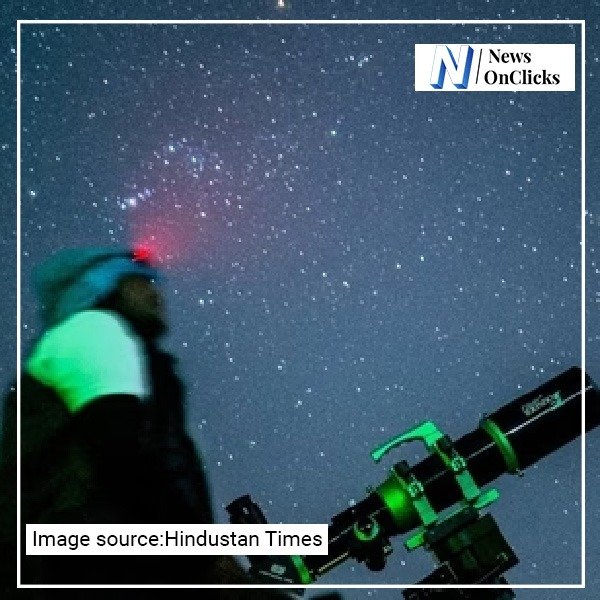
Astronomy enthusiasts around the world are in for a treat in 2025, as a rare planetary alignment, known as the Planet Parade, will light up the skies. This event is a once-in-a-lifetime opportunity to witness six planets — Venus, Mars, Jupiter, Saturn, Uranus, and Neptune — aligning across the sky in a breathtaking display. For those interested in astronomy or simply fascinated by the wonders of the cosmos, the Planet Parade 2025 is a spectacle you don’t want to miss.
While the best viewing will occur on January 25, this planetary alignment will be visible for over two months, offering a unique chance for skywatchers around the world to observe this cosmic phenomenon. Mercury will also join the parade later in February, completing the spectacle of seven visible planets. Here’s everything you need to know about the Planet Parade 2025 and how you can experience it.
What Makes Planet Parade 2025 So Special?
The Planet Parade 2025 is a rare celestial event where six planets will align in an arc across the sky. These planets include Venus, Mars, Jupiter, Saturn, Uranus, and Neptune. While this alignment is not perfectly straight, the planets will be arranged in a way that mirrors the orbital plane of our solar system. This alignment, although not an uncommon occurrence in astronomy, is a rare treat for observers because the visibility of multiple planets, especially beyond the ones closest to Earth, is a seldom-seen sight.
The phenomenon is commonly referred to as a “planet parade,” though NASA clarifies that this term is more of a nickname than a scientific one. What makes this event particularly unique is the combination of the planets’ visibility and the fact that such alignments do not occur every year.
For skywatchers, this event presents a rare opportunity to view not only the bright planets like Venus, Mars, Jupiter, and Saturn with the naked eye but also Uranus and Neptune, which are typically difficult to observe without binoculars or a telescope. These planets, situated far from Earth, will require a bit more effort to spot, but with the right equipment, the experience will be truly unforgettable.
By the end of February 2025, Mercury will join the other six planets, completing the spectacle. During this time, the alignment will stretch across the sky, with the planets gradually shifting in their positions, offering a dynamic and exciting skywatching experience.
The Best Time to View the Planet Parade 2025
The optimal time to witness the Planet Parade 2025 is during the evening, an hour after sunset. At this time, the planets will be positioned high enough in the sky to be visible without the interference of daylight. For those in the Northern Hemisphere, the planets will be visible in the western sky as the sun sets. In the Southern Hemisphere, observers will be able to see the alignment in the eastern sky during twilight.
For those hoping to capture stunning photos of the alignment, using a smartphone camera with long exposure will help capture the light trails of the planets. This technique can help produce clearer and sharper images of the planetary parade, especially as the planets will be scattered across a wide stretch of the sky.
Where to Watch: Astronomy Events Around the World
Although the Planet Parade 2025 will be visible across the globe, local astronomy groups and observatories are offering planet-gazing events to help you experience the spectacle in its full glory. These events often include expert talks, telescope setups, and deep-space exploration, providing a rich and immersive experience for both novice skywatchers and seasoned astronomers.
India: Stargazing Sessions Across the Country
In India, where the event is receiving massive interest, astronomy groups have organized special planet-gazing sessions to celebrate the Planet Parade. In cities like Delhi, Mumbai, Gurugram, Pune, and Dehradun, people of all ages are joining astronomy enthusiasts to experience the celestial phenomenon.
For instance, Forest Spirit Learning in Gurugram is organizing a sky-gazing session in Shikohpur. Jyoti Raghavan Khanduja, founder of the school, says, “We’re hosting our very first astronomy event, and the response from Delhi-NCR has been overwhelming. It’s not just about watching the planets; it’s a chance to contemplate our place in the vast cosmos.”
In Pune and Mumbai, YanamOffbeat, a travel company, has curated astronomy experiences that include deep-space telescopes, meditation sessions, and camping. These events offer participants the opportunity to get away from the city lights and enjoy a peaceful night under the stars. Piyush Arun, from YanamOffbeat, says, “We’re offering a chance to explore not only planets but also galaxies and nebulae with expert astronomers guiding the experience.”
For those in Dehradun, Universia is offering telescope viewings and expert talks about the alignment, making it an excellent spot for astronomy enthusiasts.
International: Global Skywatching Events
Astronomers across the world are equally excited about the Planet Parade 2025. Whether you’re in the USA, Europe, Australia, or Africa, many global observatories and stargazing clubs have also organized events to coincide with the alignment. Countries like Germany, the UK, and Canada are seeing an increase in public interest, with many astronomy clubs offering public sessions for skywatchers.
In the USA, stargazing events have been planned at observatories from California to New York, with some organizations offering live-streaming sessions for those unable to attend in person. Australia, known for its excellent night skies, will be a perfect place to observe the Planet Parade, with many observatories in cities like Sydney and Melbourne hosting telescope viewings.
How to Enhance Your Viewing Experience
While seeing the Planet Parade 2025 with the naked eye is an incredible experience, having the right tools can make the viewing even more spectacular. Here are some tips to enhance your skywatching:
- Use a Telescope: If you have access to a telescope, it can allow you to see the planets in greater detail. For distant planets like Uranus and Neptune, a high-powered telescope will give you a clearer view.
- Smartphone Apps: Apps like Star Walk, Star Tracker, and Sky Map can help you locate the planets in the sky and track their movement as they align over the coming weeks. These apps are perfect for both beginners and seasoned astronomers.
- Capture the Moment: If you’re keen on photography, try taking long-exposure photos to capture the movement and beauty of the planets. Ensure your camera is stable for the best results.
Other Celestial Events in 2025 You Shouldn’t Miss
The Planet Parade 2025 is just the beginning of an exciting year for skywatchers. Here are some other astronomical events that are set to take place in 2025:
- Total Lunar Eclipse — March 13-14: A stunning event where the Earth casts its shadow on the Moon, turning it a reddish color.
- Jupiter-Venus Conjunction — August 12: A celestial event where the two brightest planets align closely in the sky, creating a beautiful sight.
- Super Harvest Moon — October 6: The full moon closest to the autumn equinox, which will appear larger and brighter than usual.
- Geminid Meteor Shower — December 13-14: One of the most popular meteor showers of the year, offering up to 120 meteors per hour.
Final Thoughts: Don’t Miss the Planet Parade 2025!
The Planet Parade 2025 is a once-in-a-lifetime celestial event that is sure to inspire awe and wonder. Whether you are an experienced skywatcher or a casual observer, this is an event that connects us all to the mysteries of the universe. Make sure to mark your calendars and plan a sky-gazing session to witness the alignment of Venus, Mars, Jupiter, Saturn, Uranus, and Neptune, with Mercury joining the parade later.
From guided sessions in cities around the world to stargazing apps and live-streams, the Planet Parade 2025 promises to be a global celebration of the wonders of space. Don’t miss out on this rare cosmic spectacle that reminds us of the vast beauty of the universe.









